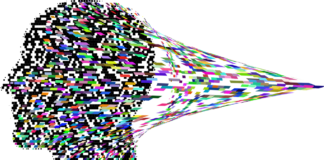The Mandrake, a mythical plant with its roots steeped in folklore, has captivated the imagination for centuries. Renowned in both historical accounts and modern interpretations, the Mandrake’s mystique and allure stem from its fascinating attributes and legendary significance. This plant, often depicted with a humanoid form due to its root structure, has been the subject of numerous myths, magical practices, and scientific inquiries throughout history. The term “Mandrake” itself evokes images of ancient rituals and alchemical lore, underscoring its importance in cultural and historical contexts.
The Mandrake’s significance is not merely limited to its appearance or the folklore surrounding it. It has played a substantial role in the development of herbal medicine and magical practices. In ancient times, it was believed that the Mandrake possessed magical properties capable of influencing human destiny and health. These beliefs were often accompanied by rituals intended to harness the plant’s purported powers. The Mandrake’s role in these rituals and its symbolic meanings reflect a deep-seated cultural fascination with the intersection of nature and the supernatural.
Ancient Traditions and Folklore
The Mandrake, with its distinct appearance, has been a subject of fascination across various cultures. In ancient Greek and Roman traditions, the Mandrake was considered a powerful plant with mystical properties. Its root, often resembling a human figure, was thought to possess magical qualities that could affect fertility, sleep, and even influence the will of the gods. This anthropomorphic shape contributed to the belief that the Mandrake was a living being with a spirit, further amplifying its significance in rituals and folklore.
In the Middle Ages, the Mandrake continued to hold a prominent place in magical and medicinal practices. It was commonly associated with witchcraft and alchemy, and its use was linked to various spells and potions. The plant’s reputation was bolstered by its association with the supernatural, making it a popular ingredient in concoctions aimed at inducing dreams, enhancing fertility, or even protecting against evil spirits. The Mandrake’s role in these practices illustrates the historical blending of herbal medicine with mystical beliefs.
Symbolism and Mythology
The Mandrake’s symbolism extends beyond its physical appearance. In mythology, it is often linked to themes of death and rebirth, as well as fertility and protection. Its root’s human-like form is symbolic of the connection between humanity and the natural world, representing the delicate balance between life and death. This connection is evident in various myths and legends, where the Mandrake is portrayed as a powerful entity capable of influencing human affairs through its magical properties.
In some cultures, the Mandrake was believed to be a guardian of the underworld, with its roots acting as a bridge between the living and the dead. This belief underscores the plant’s significance in rituals intended to communicate with the spirit world or seek protection from malevolent forces. The Mandrake’s role in these rituals highlights its importance as a symbol of the supernatural and its connection to the mysteries of life and death.
Botanical Characteristics
Physical Description
The Mandrake plant is characterized by its distinctive appearance. Its root, which often resembles a human figure, is one of its most notable features. This anthropomorphic shape has contributed to the plant’s mythical reputation, as it is believed to resemble a human form, complete with limbs and a head. The Mandrake’s leaves are typically large and broad, growing in a rosette pattern from the base of the plant. The plant produces bell-shaped flowers that range in color from white to purple, adding to its striking appearance.
The Mandrake’s root is the most significant part of the plant, both in terms of its physical form and its historical uses. The root’s shape has inspired numerous legends and myths, as it is often associated with supernatural abilities and magical properties. In herbal medicine, the root was used for its purported medicinal benefits, including its effects on pain relief and anesthesia.
Habitat and Growth
Mandrakes are typically found in Mediterranean regions, thriving in well-drained soils with a sunny climate. The plant prefers a temperate environment and is often associated with rocky or sandy areas. Mandrakes can also be cultivated in gardens, where they require specific conditions to flourish. The plant’s growth is relatively slow, and it may take several years to reach maturity. This slow growth contributes to the plant’s rarity and adds to its mystique.
Mandrakes are often grown from seeds, which can be challenging to cultivate due to their specific requirements. The seeds need to be sown in a suitable environment, with appropriate soil conditions and temperature. Once established, the plant requires careful attention to ensure its continued growth and health. The cultivation of Mandrakes reflects the historical and cultural significance of the plant, as it requires a deep understanding of its needs and characteristics.
Historical Use and Significance
Medicinal Uses
Historically, the Mandrake was used in various medicinal practices due to its believed therapeutic properties. The plant’s root was used in traditional medicine to treat a range of ailments, including pain, sleep disorders, and digestive issues. It was believed to have analgesic and sedative effects, making it a valuable component in early medical practices.
In ancient Greece and Rome, the Mandrake was used as an anesthetic during surgical procedures. The plant’s sedative properties were harnessed to induce a state of unconsciousness or numbness, allowing for more comfortable and less painful surgeries. This use of the Mandrake highlights its importance in early medical practices and its role in the development of anesthesia.
Magical and Ritualistic Uses
Beyond its medicinal uses, the Mandrake was also associated with magical and ritualistic practices. In various cultures, the plant was used in spells and rituals aimed at invoking supernatural powers or seeking protection from evil forces. The Mandrake’s anthropomorphic root was believed to possess magical qualities that could influence the outcomes of these rituals.
In medieval Europe, the Mandrake was a common ingredient in potions and charms used by witches and alchemists. The plant was believed to enhance the efficacy of magical practices and provide protection against malevolent spirits. Its use in these rituals reflects the blending of herbal medicine with mystical beliefs, as the plant was seen as a conduit for supernatural forces.
Modern Interpretations and Cultural Impact
Popular Culture
The Mandrake’s influence extends into popular culture, where it continues to capture the imagination of audiences. The plant has appeared in various forms of media, including literature, film, and television. Its mystical and magical attributes make it a popular subject in fantasy genres, where it is often depicted as a powerful and enigmatic entity.
In literature, the Mandrake has been featured in works ranging from classic novels to modern fantasy series. Its appearance in these works often reflects its historical and cultural significance, as well as its association with magic and the supernatural. The plant’s role in popular culture underscores its enduring appeal and the continued fascination with its mythical attributes.
Scientific Interest
In addition to its cultural and historical significance, the Mandrake has also been the subject of scientific research. Botanists and herbalists have studied the plant to understand its properties and potential medicinal uses. While some of the historical claims about the Mandrake’s effects have been disproven, ongoing research continues to explore the plant’s potential benefits and applications.
The scientific study of the Mandrake provides valuable insights into its botanical characteristics and historical uses. Researchers examine the plant’s chemical composition, pharmacological effects, and potential therapeutic applications. This research contributes to a deeper understanding of the Mandrake and its place in both historical and modern contexts.
Conclusion
The Mandrake, with its rich history and mystical attributes, remains a captivating subject of study and fascination. Its unique appearance, combined with its historical and cultural significance, makes it a symbol of the intersection between nature and the supernatural. From its medicinal uses in ancient practices to its role in modern popular culture, the Mandrake continues to inspire and intrigue.
The Mandrake’s legacy is a testament to the enduring allure of mythical plants and their impact on human history and culture. Its influence spans centuries and cultures, reflecting a deep-seated fascination with the mysteries of nature and the supernatural. As we continue to explore and understand the Mandrake, we gain insight into the ways in which mythology, history, and science intersect to shape our understanding of the world.














